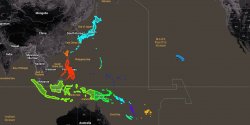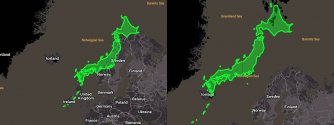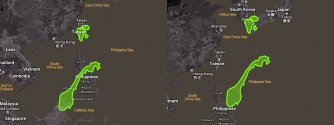Recently I had serious doubts about the quality of discussion on this forum, especially witnessing the repeated and predictable failure of every subsequent Russian invasion thread, and felt discouraged. But I will try to add to this topic as it is of great interest to me - if not the greatest of all the aspects of naval rivalry between US and China.
Specifically I will add two basic arguments that I see often being ignored in considerations.
1. On force evolution
Any weapon is
a specific tool for a specific task, and its counter may or may not come in the same category. We have only one historical precedent.
key: first order, class, number of ships, commissioning dates
USN SSN
1951 Nautilus 1 1954
1952 Seawolf 1 1957
1955 Skate 4 1957-59
1956 Skipjack 6 1959-61
1958 Thresher 14 1961-67
1961 Sturgeon 37 1967-75
1971 688 31 1976-85
1979 688 VLS 8 1984-89
1982 688i 8 1988-91
USN SSBN
1957 George Washington 5 1959-60
1959 Ethan Allen 5 1960-62
1961 Lafayette 9 1963-64
1962 James Madison 10 1964
1963 Benjamin Franklin 12 1965-67
1976 Ohio 12 1981-91
Soviet SSN
1955 November 13 1958-64
1963 Victor I 15 1967-71
1968 Alfa 7 1971-81
1971 Victor II 7 1972-78
1976 Victor III 25 1977-90
1979 Sierra 3 1984-90
1983 Akula 8 1984-91
Soviet SSGN
1958 Echo 5 1961-63
1961 Echo II 29 1963-68
1964 Charlie 11 1967-72
1974 Charlie II 6 1973-80
1975 Oscar 8 1980-90
Soviet SSBN
1964 Yankee 34 1967-74
1970 Delta I 18 1972-77
1973 Delta II 4 1975
1974 Delta III 14 1976-82
1976 Typhoon 6 1981-89
1981 Delta IV 7 1984-1990
As you can see both US and Soviet navies had different objectives in their nuclear submarine buildup.
USN first built 41 (for freedom) SSBNs in 1959-67 by which time it had only 26 SSNs. Sturgeon class marked the transition to nuclear-only fleet and with the last boat in service there were only 10 SSKs left.
Soviets built 13 SSNs and 34 SSGNs before first SSBN. Then it built 34 SSBNs in 1967-74 and only 22 SSNs and 11 SSGNs.
After two decades of nuclear submarine buildup, circa 1974, US had 41 SSBNs and 60 SSNs, Soviets had 34 SSBNs, 34 SSNs and 45 SSGNs.
In 1991 US had 37 SSBNs and 93 SSNs, Soviets had 61 SSBNs, 59 SSNs and 29 SSGNs. Royal Navy also had 17 SSNs in 1991.
Both SSBN and SSGN reduction came as consequence of development of missiles. Echo SSGN had to surface to fire its four Pyatyorka missiles and they were replaced by a much bigger Oscar with 24 Granits. Charlie had 8 missiles but could launch submerged.
What this shows is a different set of priorities as well as the always ignored fundamental -
SSNs do not hunt SSNs.
Soviet SSNs and SSGNs hunted USN carriers. US SSNs hunted Soviet SSBNs and SSN/SSGNs
only because of the huge tech gap in sonar and silencing. Also Soviets had no (real) carriers throughout the Cold War while USN had 14 on average.
The buildup had clear two phases - let's call them a "catch-up" phase and a "head-to-head" phase.
This means that PLAN will have its own set of priorities that
may or may not follow USN priorities or Soviet priorities. It will however definitely be a direct response to US posture in the theater. Also both sides will respond to the other's posture - regardless of who is "ahead" or "behind" in the race.
2. On contested environment
Almost everything we know about peer nuclear submarine warfare evolved from USN/RN vs Soviet contest that took place in the North Atlantic/Arctic predominantly, and in very limited terms in the North Pacific. This means most of it took place on the area of the globe distorted by Mercator projections. That affects our (lack of) understanding of
how different the scale is in West Pacific. Fortunately there's TheTrueSize dot com.
West Pacific
View attachment 88652
North Atlantic - Indonesia for scale
View attachment 88653
North Atlantic - Papua New Guinea for scale
View attachment 88654
North Atlantic - Japan for scale
View attachment 88656
West Pacific - Norway and Svalbard for scale
View attachment 88655
Also the "tiny" Northern Marianas cover the gap between Iceland and Britain or Norway and Svalbard. For scale.
In short nothing about the past - including WW2 and Cold War submarine and naval warfare in the West Pacific - is strongly indicative of how it will develop in the future. This is terra incognita... or should I say
mare incognitum.
I think that at any time you think about writing a comment about future PLAN nuclear submarines it will benefit you to remember these two points. I know that just preparing the lists of ships and maps affected almost all of my preconceptions on the subject. I thought I would find answers, instead I found many questions which require too many calculations.
Which is why I don't have anything more to add at this time. My ignorance is vast and I have only a (tiny) cup of green tea for scale. You get the idea. Have fun.





